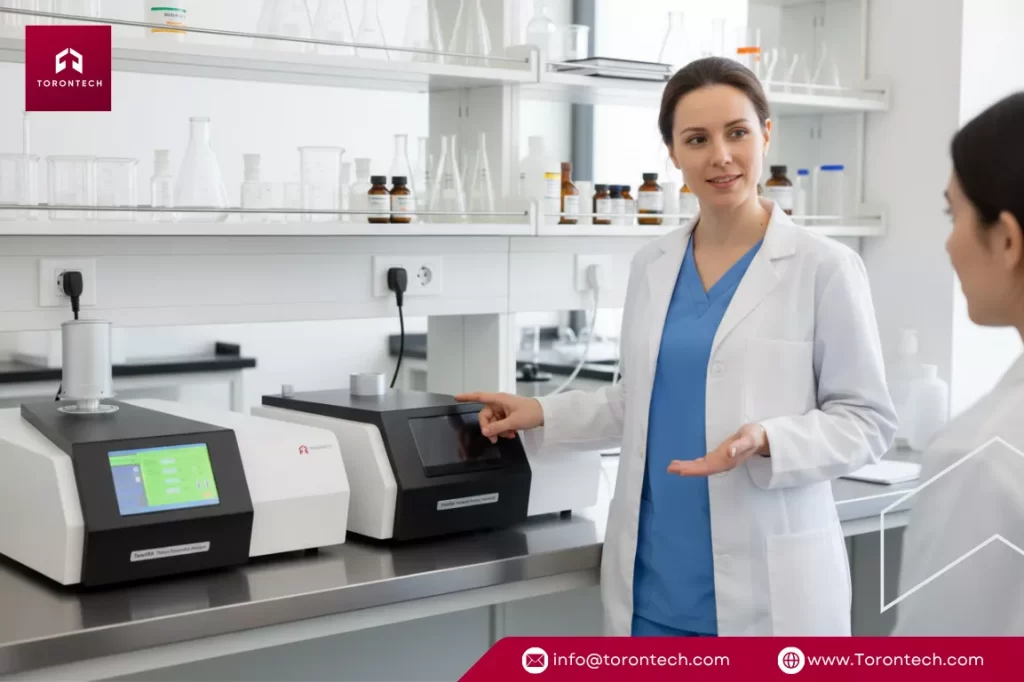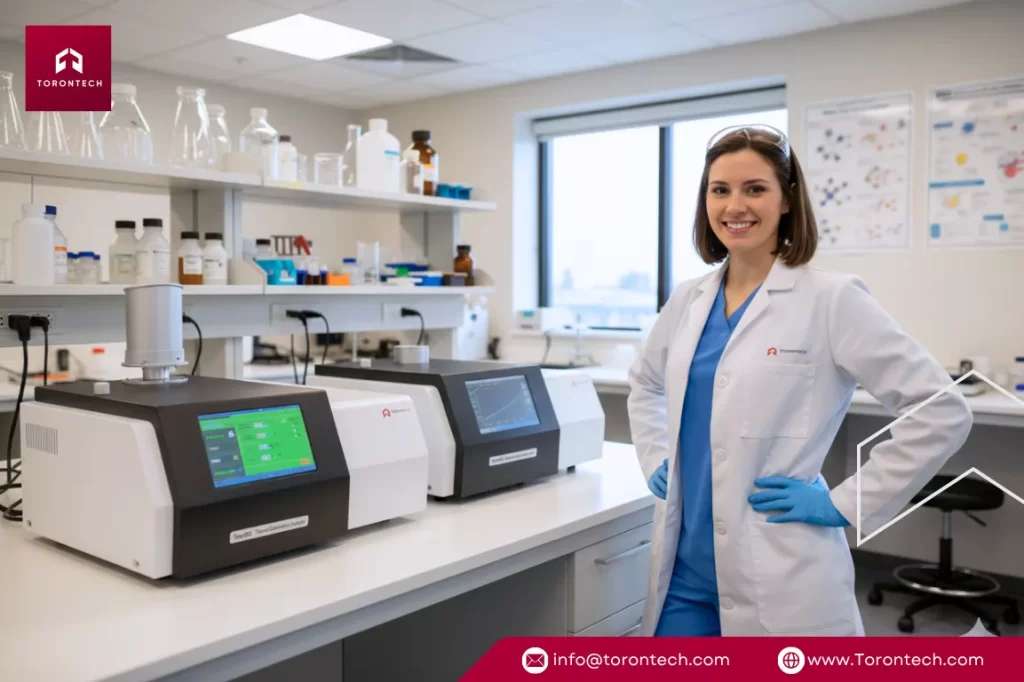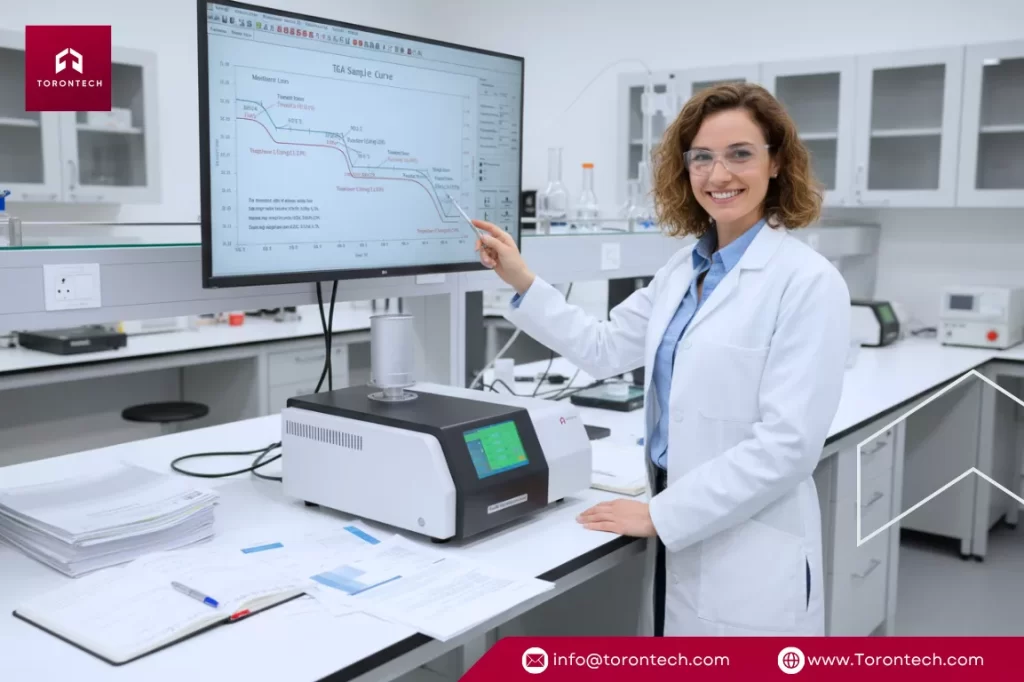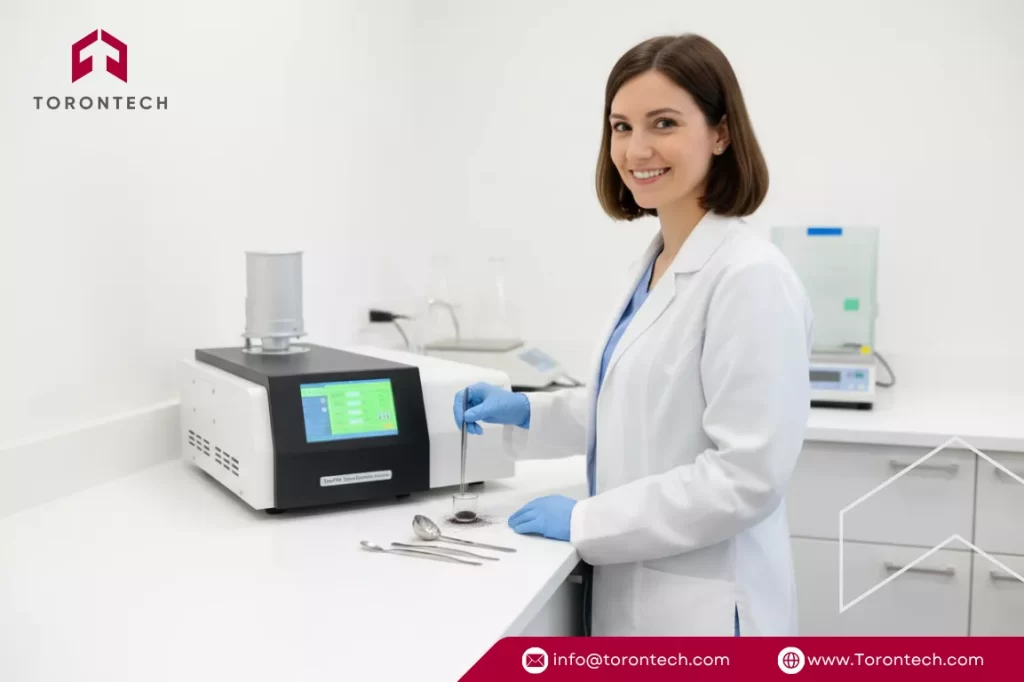In materials work, getting the details right is fundamental to success. We’ve seen firsthand that a deep knowledge of thermal analysis is essential for innovation and quality control.
For gaining that knowledge, you have two foundational methods: Thermogravimetric Analysis (TGA) and Differential Scanning Calorimetry (DSC). Understanding the difference between TGA and DSC is the key to getting accurate, actionable results in the most efficient way possible.
At a Glance: The Core DSC and TGA Difference
For busy professionals who need a quick reference, this table summarizes what separates the two techniques. This is often the fastest way to understand the primary DSC vs TGA distinctions.
| Feature | Thermogravimetric Analysis (TGA) | Differential Scanning Calorimetry (DSC) |
| What It’s Built to Detect | Changes in sample mass (weight) | The flow of heat and energy |
| Primary Function | Assess thermal stability, determine composition, quantify volatiles | Identify phase transitions like melting, crystallization, and glass transition |
| Key Question Answered | “At what temperature does this material begin to break down?” | “When does this material melt, and how much energy does that require?” |
| Typical Data Output | A TGA curve showing the percentage of weight loss as temperature increases | A graph showing heat flow events as temperature changes |
So, What’s the Actual Difference Between TGA and DSC?
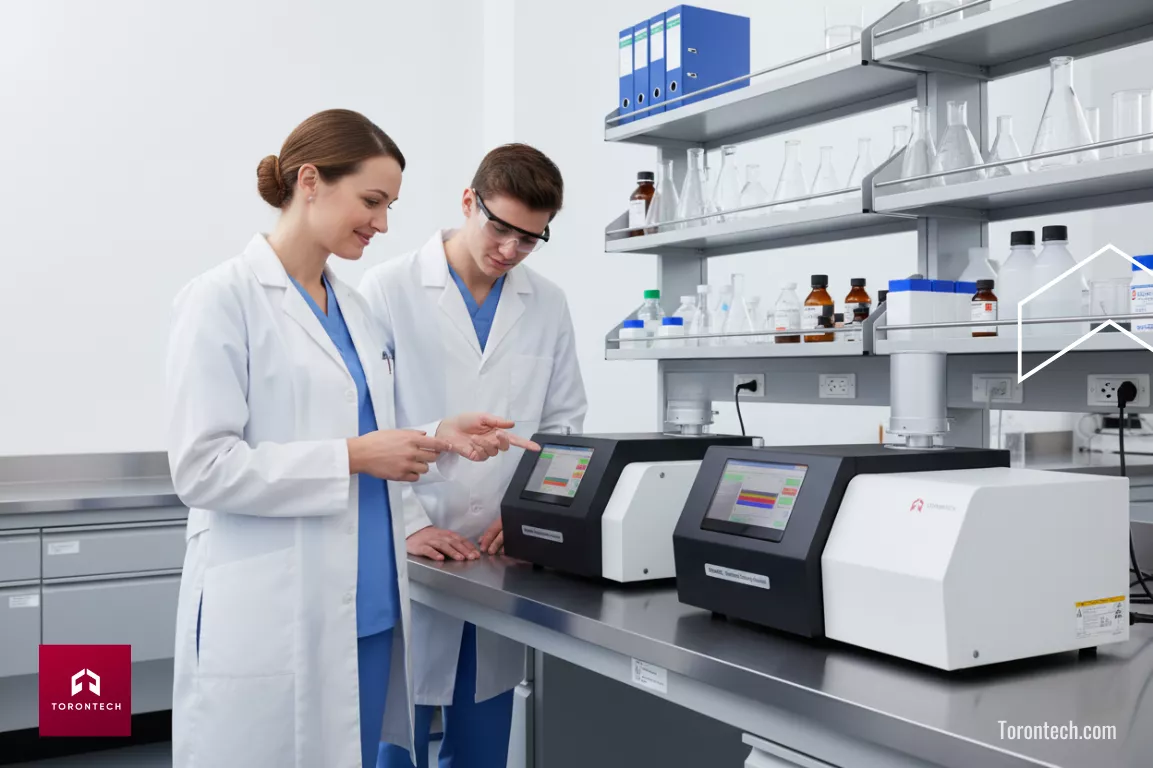
Looking beyond the table, the simplest way we frame it is by asking one central question: “Am I investigating a weight change or an energy change?” Your answer will almost always point you to the correct instrument for your specific DSC vs TGA analysis.
Thermogravimetric Analysis (TGA): The Story of Mass
At its heart, a TGA is a high-precision balance connected to a furnace.
It is focused entirely on mass. It continuously monitors your sample and reports the instant it gains weight from oxidation or, more commonly, loses weight from decomposition or drying. It’s the definitive tool for seeing how a material physically falls apart.
Differential Scanning Calorimetry (DSC): The Story of Energy
A DSC is not concerned with weight at all. Its entire focus is on energy. It carefully measures the heat flowing into or out of your sample compared to a reference. This allows it to show you precisely when your material undergoes a structural shift that requires a change in energy, like the heat needed to break crystalline bonds during melting.
When to Use TGA
In our experience, an instrument like our ToronTGA Thermogravimetric Analyzer is the true workhorse for compositional analysis and stability testing.
For a practical example, consider a pharmaceutical lab that must verify moisture content. TGA is the right tool because it can precisely measure the tiny amount of weight lost as water is released as vapor.
In the same way, a mining company can use TGA to determine the purity of a mineral by measuring its decomposition pattern.
We recommend TGA when you need to:
- Identify a material’s thermal breaking point.
- Determine the composition of a compound, like quantifying the percentages of polymer and filler.
- Measure residual moisture or solvents for quality assurance.
- Study degradation rates to inform stability and lifespan predictions.
When Is It DSC’s Time to Shine?
We recommend a DSC, like our ToronDSC Differential Scanning Calorimeter, for situations where you need to understand a material’s physical properties.
Imagine your team is developing a new polymer for automotive parts. DSC is essential for identifying its glass transition temperature, ensuring it won’t become brittle.
Similarly, in metallurgy, DSC is critical for identifying the exact melting and crystallization points of novel metal alloys, which directly impacts their performance.
It is the ideal choice for:
- Defining the exact temperatures for melting and crystallization.
- Finding the glass transition temperature, a critical property for amorphous materials.
- Measuring a material’s heat capacity.
- Monitoring curing reactions in adhesives and composites.
The Combined Approach: Why TGA and DSC Analysis Work Better Together
This is where the most valuable findings emerge. While individual analyses are effective, combining data from TGA and DSC is a strategy we always recommend for complex challenges. Relying on just one can leave you with an incomplete picture of your material.
For instance, your TGA data might show a weight loss at 200°C, but it cannot explain the nature of that event. By analyzing the same material with DSC, you could determine if that event was endothermic (absorbing energy) or exothermic (releasing it).
This complete DSC and TGA difference provides a full data set, removing ambiguity and allowing for the confident, informed decisions that drive development forward.
Torontech: Cost-Effective TGA & DSC
At Torontech, this is our area of expertise. Our instruments, including the ToronTGA Thermogravimetric Analyzer and the ToronDSC Differential Scanning Calorimeter, are engineered to deliver clean, repeatable results that you can trust. We made a point to develop a cost-effective solution with a wide temperature range, high sensitivity, and intuitive software that simplifies operation. We believe this level of deep insight should be accessible.
Whether you need a standalone TGA, a DSC, or a complete thermal analysis setup, we have the experience to guide you. Our commitment is to provide innovative, reliable technology that supports your work.
Ready to learn more about how our TGA and DSC solutions can benefit your operations? Contact us today for a direct quote and let’s discuss your specific application and how you can get the answers you need from your materials.
Want More Reliable TGA Results?
References:
- Leyva-Porras, C., Cruz-Alcantar, P., Espinosa-Solís, V., Martínez‐Guerra, E., Piñón-Balderrama, C., Martínez, I., & Saavedra-Leos, M. (2019). Application of Differential Scanning Calorimetry (DSC) and Modulated Differential Scanning Calorimetry (MDSC) in Food and Drug Industries. Polymers, 12. https://doi.org/10.3390/polym12010005
- Corrêa, R., Ribeiro, R., Borges, M., Júnior, E., & Gomes, J. (2024). Discrimination Efficiency of Thermogravimetry and Differential Scanning Calorimetry in Soil Forensics. Forensic Sciences. https://doi.org/10.3390/forensicsci4010007
- Pires, J. (2024). Simultaneous Thermogravimetry-Differential Scanning Calorimetry (TG-DSC) in Nanoporous Materials: Examples of Data for Zeolites, Metal–Organic Frameworks (MOFs), Clay Based and Mesostructured Solids. Journal of Inorganic and Organometallic Polymers and Materials. https://doi.org/10.1007/s10904-024-03048-w
- Rojek, B., & Wesołowski, M. (2022). A combined differential scanning calorimetry and thermogravimetry approach for the effective assessment of drug substance-excipient compatibility. Journal of Thermal Analysis and Calorimetry, 148, 845-858. https://doi.org/10.1007/s10973-022-11849-9
- Byrn, S., Zografi, G., & Chen, X. (2017). Differential Scanning Calorimetry and Thermogravimetric Analysis, 124-141. https://doi.org/10.1002/9781119264408.CH10
- Zainal, N., Saiter, J., Halim, S., Lucas, R., & Chan, C. (2020). Thermal analysis: basic concept of differential scanning calorimetry and thermogravimetry for beginners. Chemistry Teacher International, 3, 59 – 75. https://doi.org/10.1515/cti-2020-0010
- Mansa, R., & Zou, S. (2021). Thermogravimetric analysis of microplastics: A mini review. Environmental Advances. https://doi.org/10.1016/j.envadv.2021.100117
- Leparlouer, P., Mercier, J., & Jalon, B. (1986). Introduction to a new simultaneous TG-DSC 111. Thermochimica Acta, 103, 21-26. https://doi.org/10.1016/0040-6031(86)80006-5
Frequently Asked Questions (FAQ)
1. What is the main difference between TGA and DSC?
The main difference between TGA and DSC is that TGA measures changes in a material’s mass or weight as it is heated, while DSC measures the changes in heat flow or energy. TGA is used to see when a material degrades or loses components, like moisture, whereas DSC is used to find phase transitions like melting and crystallization that do not involve a change in mass.
2. Can you use TGA and DSC at the same time?
While TGA and DSC are typically performed in separate, dedicated instruments like our ToronTGA and ToronDSC, their data is often combined to provide a complete thermal profile. A specialized technique called Simultaneous Thermal Analysis (STA) does exist to perform both measurements on one sample at once, but many labs find that using two optimized instruments provides more precise and reliable results for their specific analysis.
3, Which is better for polymer analysis, TGA or DSC?
Neither technique is inherently better for polymer analysis; in fact, both are considered essential for a complete characterization. TGA is used to determine a polymer’s thermal stability, filler content, and moisture levels. DSC, on the other hand, is used to find critical properties like the glass transition temperature (Tg), melting point, and degree of crystallinity, all of which dictate the polymer’s physical performance and processing conditions.
4. What does TGA tell you about a material?
Thermogravimetric Analysis tells you about a material’s thermal stability and composition. It shows the specific temperatures at which a material begins to lose weight due to processes like decomposition, drying, or the release of volatile components. This information is critical for determining the operational temperature limits of a material and for quantifying its different components by weight.
5. What does DSC tell you about a material?
Differential Scanning Calorimetry tells you about a material’s thermal transitions and energy-related properties. It identifies the precise temperatures at which a material undergoes phase changes, such as melting, freezing, or a glass transition from a rigid to a more pliable state. DSC also quantifies the energy absorbed or released during these events, which is vital for understanding a material’s heat capacity, purity, and processing characteristics.

